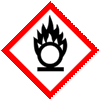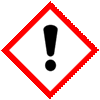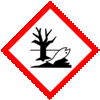 |
King of Chemicals Manufacturers |
Specifications, Properties, Uses, SDS of Potassium Permanganate USP BP Ph Eur EP IP JP Analytical Reagent Grade Manufacturer Supplier Exporter Wholesale & Small Packs, CAS Number 7722-64-7. |
|
| King of Chemicals has several associated companies having accreditations like cGMP, GLP - FDA Approved Good Manufacturing Practice and Good Laboratory Practice of WHO standard, ISO-9001, ISO-14001, ISO/IEC 17025, ISO ISO-45000, HACCP, FSSC 220000, FSSAI, "REACH" Registered, Kosher & Halal Certified. e-CTD and DMF support can be made available if needed. We offer USP NF BP Ph Eur EP IP JP Analytical Reagent FCC Food Grade Chemicals & Nutraceuticals. | |
        |
|
Muby Chem Pvt. Ltd. is a several decades old group of companies, engaged in manufacturing, supplying, distributing, wholesale supplies of Potassium Permanganate USP BP Ph Eur EP IP JP Analytical Reagent Grade for actual users, including retail or small pack supplies for research and development work.
We supply fine and speciality chemicals, pharmaceutical excipients, mineral fortifiers in chemically pure, analytical reagent grade, IP BP USP Ph Eur EP JP and other pharmaceutical grade monograph including FCC Food grade chemicals and Nutraceuticals at best prices. We and/or our associated units have all the facilities to supply as per cGMP standard observing good manufacturing practice and good laboratory practice. We can assure low microbial count and also offer a test certificate for the same. We maintain warehouses across USA, India, and UAE. Our group exports to USA, Canada, Mexico, Argentina, Brazil, Chile, Korea, Malaysia, Thailand, Indonesia, Europe, and several other parts of the world. We supply in wholesale container loads to small pack of few grams. Solid products may be specified for it size and shape as desired by the buyer.









Potassium Permanganate CAS Number 7722-64-7
For Properties Specifications Uses of Potassium Permanganate Click Properties, Specifications, Uses, Price, Process of Potassium Permanganate Manufacturer.
For For SDS MSDS Sheet of Potassium Permanganate Click SDS Safety Data Sheet MSDS Sheet of Potassium Permanganate Manufacturer.
The Properties, Specifications, Monograph and Uses of Potassium Permanganate:
CAS Number 7722-64-7, EINECS EC Number 231-760-3, HS Code 28416100, Molecular Weight 158.03, Chemical Formula KMnO4
Potassium permanganate is an inorganic compound with the chemical formula KMnO4 and composed of K+ and MnO-4. It is a purplish-black crystalline salt, that dissolves in water to give intensely pink or purple solutions. Potassium permanganate is widely used in chemical industry and laboratories as a strong oxidizing agent, and also as a medication for dermatitis, for cleaning wounds, and general disinfection. It is on the WHO Model List of Essential Medicines, the safest and most effective medicines needed in a health system. Almost all applications of potassium permanganate exploit its oxidizing properties. Potassium permanganate is used for a number of skin conditions, water treatment, fruit preservation etc.
Potassium Permanganate USP Grade Specifications:
KMnO4 --- 158.03
Permanganic acid (HMnO4), potassium salt;
Potassium permanganate (KMnO4) CAS 7722-64-7
DEFINITION
Potassium Permanganate contains NLT 99.0% and NMT 100.5% of potassium permanganate (KMnO4), calculated on the dried basis.
[Caution:Observe great care in handling Potassium Permanganate, because dangerous explosions may occur if it is brought into contact with organic or other readily oxidizable substances, either in solution or in the dry state.]
IDENTIFICATION
A. Identification Tests-General, Permanganate: A solution of it is deep violet-red when concentrated and pink when highly diluted.
ASSAY
Procedure
Sample: 1000 mg of Potassium Permanganate
Titrimetric system
Mode: Residual titration
Titrant: 0.03 N potassium permanganate
Endpoint detection: Visual
Analysis: For each mg of Potassium Permanganate taken, add 2.13 mg of sodium oxalate, previously dried at 110C to constant weight, to a 500-mL conical flask. Add 150 mL of water and 20 mL of 7 N sulfuric acid, and heat to 80C. Titrate the excess oxalic acid with Titrant. Calculate the percentage of potassium permanganate (KMnO4) in the portion of Potassium Permanganate taken:
Result = [(F1 x W S) - (VS x N x F2)] x (100/W)
F1 = equivalency factor, 0.4718 mg of potassium permanganate per mg of sodium oxalate
WS = weight of sodium oxalate taken (mg)
VS = Titrant volume consumed by the Sample (mL)
N = actual normality of the Titrant (mEq/mL)
F2 = equivalency factor, 31.61 mg of potassium permanganate per mEq
W = Sample weight (mg)
Acceptance criteria: 99.0% to 100.5% on the dried basis.
Sample: 2.0 g
Analysis: Dissolve the Sample in 150 mL of water that previously has been warmed to steam-bath temperature, and filter immediately through a tared, medium-porosity filtering crucible. Wash the filter with three 50-mL portions of the warm water and dry the filtering crucible and the residue at 105C for 3 h.
Acceptance criteria: 0.2%; NMT 4 mg of residue is obtained.
Loss on Drying:
Analysis: Dry over silica gel for 18 h.
Acceptance criteria: NMT 0.5%
Packaging and Storage: Preserve in well-closed containers.
Specifications of Potassium Permanganate BP Ph Eur Grade
KMnO4 --- 158.0
DEFINITION
Content: 99.0 per cent to 100.5 per cent.KMnO4.
CHARACTERS
Appearance: Dark purple or brownish-black, granular powder or dark purple or almost black crystals, usually having a metallic luster.
Solubility: Soluble in cold water, freely soluble in boiling water. It decomposes on contact with certain organic substances.
IDENTIFICATION
A. Dissolve about 50 mg in 5 ml of water and add 1 ml of ethanol (96 per cent) and 0.3 ml of dilute sodium hydroxide solution. A green colour develops. Heat to boiling. A dark brown precipitate is formed.
B. Filter the mixture obtained in identification test A. The filtrate gives reaction of potassium.
TESTS
Solution S: Dissolve 0.75 g in 25 ml of distilled water, add 3 ml of ethanol (96 per cent) and boil for 2-3 min. Cool, dilute to 30 ml with distilled water and filter.
Appearance of solution: Solution S is colourless.
Substances insoluble in water: Maximum 1.0 per cent.
Chlorides: Maximum 200 ppm.
Sulphates: Maximum 500 ppm.
We also manufacture Potassium Permanganate EP IP JP Grade.
Specifications of Potassium Permanganate Analytical Reagent Grade
KMnO4 --- 158.03 --- CAS 7722-64-7
REQUIREMENTS
Assay: 99.0% KMnO4 min
MAXIMUM ALLOWABLE
Insoluble matter: 0.2%
Chloride and chlorate (as Cl): 0.005%
Nitrogen compounds (as N): 0.005%
Sulfate (SO4): 0.02%
The MSDS-SDS Hazard Statement of Potassium Permanganate:
Potassium Permanganate SDS GHS, Safety Data Sheet
MSDS, Material Safety Data Sheet 05-Aug-21
1. PRODUCT DESCRIPTION
Product Name & Other Names: Potassium permanganate; Permanganic acid, potassium salt.
CAS Number: 7722-64-7
EINECS EC Number: 231-760-3
Formula: KMnO4
Molecular Weight: 158.03
Relevant uses and uses advised against (if any): Industrial Manufacturing.
Suppliers: As per letterhead.
2. HAZARD IDENTIFICATION
GHS, Globally Harmonized System Classification in accordance with 29 CFR 1910
Classification according to Regulation (EC) No 1272/2008
Oxidizing solids Category 2, H272
Acute toxicity, oral Category 4, H302
Acute toxicity, dermal Category 4, H312
Skin corrosion Category 1C, H314
Hazardous to the aquatic environment, acute hazard Category 1, H400
Labeling according to GHS & Regulation (EC) No 1272/2008
GHS Label Elements  Oxidizing Solid |
|
GHS Label Elements |
Signal Word: Danger
Hazard Statements:
H272: May intensify fire; oxidizer.
H302: Harmful if swallowed.
H312: Harmful in contact with skin.
H314: Causes serious skin burns and eye damage.
H400: Very toxic to aquatic life.
Precautionary Statements:
P210: Keep away from heat/sparks/open flames/hot surfaces. - No smoking.
P220: Keep/Store away from clothing/other combustible materials.
P221: Take any precaution to avoid mixing with combustibles.
P260: Do not breathe dust/fume/gas/mist/vapors/spray.
P264: Wash ... thoroughly after handling.
P270: Do not eat, drink, or smoke when using this product.
P280: Wear protective gloves/protective clothing/eye protection/face protection.
P273: Avoid release to the environment.
P280-Wear protective gloves/protective clothing/eye protection/face protection.
P302+352: IF ON SKIN: Wash with soap and water.
P305+P351+P338: IF IN EYES: Rinse cautiously with water for several minutes. Remove contact lenses, if present and easy to do. Continue rinsing.
P314: Get Medical advice/attention if you feel unwell.
P362: IF SWALLOWED: Call a POISON CENTER or doctor/physician if you feel unwell.
P337+P313: If eye irritation persists: Get medical advice/ attention.
P370+378: In case of fire: Use dry chemical, CO2, or appropriate foam for extinction.
P391: Collect spillage.
P501: Dispose of contents/container in accordance with local/regional/national/international regulations.
3. COMPOSITION/INFORMATION ON INGREDIENTS
Product Name & Other Names: Potassium Permanganate; Permanganic acid, potassium salt
CAS No.: 7722-64-7
EINECS EC Number: 231-760-3
4. FIRST AID MEASURES
Always seek medical attention after first aid measures are provided.
Emergency and First Aid Procedures:
Eyes - Immediately flush eyes with plenty of water for at least 15 minutes, lifting lower and upper eyelids occasionally. Get medical attention immediately.
Skin - Thoroughly wash exposed area for at least 15 minutes. Remove contaminated clothing. Launder contaminated clothing before reuse. Get medical attention at once.
Ingestion - If Potassium permanganate is swallowed, DO NOT INDUCE VOMITING. Give large quantities of water. Never give anything by mouth to an unconscious person. Get medical attention immediately.
Inhalation - Remove to fresh air. Give oxygen if breathing is difficult; give artificial respiration if breathing has stopped. Keep person warm, quiet and get medical attention at once.
5. FIREFIGHTING PROCEDURES
Extinguisher Media: Use dry chemical, CO2, or appropriate foam.
Extinguishing Media Not recommended: None specified.
Auto ignition Temperature: N/A
Unusual Fire and Explosion Hazards: Potassium permanganate is strong oxidizer. Contact with combustible materials, flammable materials or powdered metals can cause fire or explosion.
Special Information: In the event of a fire, wear full protective clothing and NIOSH-approved self-contained breathing apparatus with full face piece operated in the pressure demand or other positive pressure mode. At high temperatures under fire conditions, it may produce toxic or irritating fumes. Fire-extinguishing work is done from the windward and the suitable fire-extinguishing method according to the surrounding situation is used. Uninvolved persons should evacuate to a safe place.
6. SPILL OR LEAK PROCEDURES
Personal precautions, protective equipment, and emergency procedures: Ventilate area of spill. Clean-up personnel should wear proper protective equipment. Avoid creating dust. Sweep or scoop up and containerize for disposal. Avoid breathing dust/fumes/gas/mist/vapors/spray. Use individual protective equipment (waterproof boots, suitable protective clothing, safety glasses, etc.). Restrict unprotected personnel from the area. Prevent any contact with hot surfaces. Do not approach facing the wind. Do not touch the spilled material.
Environmental precautions: Do not let the product enter drains, soil, or water sources.
Methods and materials used for containment cleanup procedures and Storage: Contain spilled material. Cover with an inert, non-combustible absorbent material, (e.g., sand, earth, diatomaceous earth, vermiculite). Vacuum or sweep-up and remove to an approved disposal container.
7. SPECIAL PRECAUTIONS
Precautions for safe handling: Apply according to good manufacturing and industrial hygiene practices. Ensure proper ventilation. Wash thoroughly after handling. Do not drink, eat, or smoke while handling. Avoid contact with skin, eyes, and clothing. Minimize dust generation. Avoid breathing dust/fumes/gas/mist/vapors/spray. Avoid contact with eyes, skin, and clothing. Keep container tightly closed. Avoid ingestion and inhalation. Use individual protective equipment (waterproof boots, suitable protective clothing, safety glasses, etc.). Prevent any contact with hot surfaces.
Conditions for safe storage, including any incompatibilities: Store in cool, dry, and ventilated area away from heat sources and protected from sunlight in tightly closed original container. Keep air contact to a minimum. Do not leave the material container open. Store protected from heat, sparks and ignition sources and incompatible materials. Avoid contact with skin and eyes. Avoid inhalation of dust/mist/vapor. Do not store with incompatible materials like organic materials, combustible materials, strong reducing agents, strong acids, peroxides, alcohols, chemically active metals, flammable, and combustible materials.
8. SPECIAL PROTECTION INFORMATION
Exposure Limits:
Chemical Name: Manganese and inorganic compounds, as Mn
ACGIH (TLV): TWA: 0.2 mg/m3(A4)
OSHA (PEL): STEL: C 5 mg/m3
NIOSH (REL): TWA: 1 mg/m3 / STEL: 3 mg/m3
Appropriate engineering controls: Handle in accordance with good industrial hygiene and safety practice. Wash hands before breaks and at the end of workday. Emergency eye wash fountains and safety showers should be available in the immediate vicinity of any potential exposure. Ensure adequate ventilation.
Respiratory Protection (Specify Type): None needed under normal conditions of use with adequate ventilation.
Ventilation System: A system of local and/or general exhaust is recommended to keep employee exposures as low as possible. Local exhaust ventilation is generally preferred because it can control the emissions of the contaminant at its source, preventing dispersion of it into the general work area.
Personal Respirators (NIOSH Approved): For conditions of use where exposure to dust or mist is apparent and engineering controls are not feasible, a particulate respirator may be worn. For emergencies or instances where the exposure levels are not known, use a full-face positive-pressure, air-supplied respirator.
Skin Protection: Wear protective gloves and clean body-covering clothing.
Eye Protection: Use chemical safety goggles and/or full-face shield where dusting or splashing of solutions is possible. Maintain eye wash fountain and quick-drench facilities in work area.
Other Control Measures: Maintain good housekeeping in work area. Dust deposits on floors and other surfaces may pick up moisture and cause the surfaces to become slippery and present safety hazards. Handle in accordance with good industrial hygiene and safety practice. Wash hands after handling.
9. PHYSICAL DATA
Appearance: Dark purple to bronze crystals.
Odor: Odorless.
Odor threshold: Not available.
pH: Not available.
Relative density: 2.7
Melting Point: Approximately 240C
Initial boiling point and boiling range: Not available.
Flash point: Not available.
Auto-ignition temperature: Not available.
Decomposition temperature: Not available.
Upper/lower flammability or explosive limits: Not available.
Vapor pressure: Not available.
Vapor density: Not available.
Evaporation rate: Not available.
Flammability (solid, gas): Not available.
Partition coefficient: n-octanol/water: Not available.
Solubility in Water: Moderate
Viscosity: Not available.
Formula: KMnO4
Molecular Weight: 158.03
10. REACTIVITY DATA
Stability: Stable under ordinary conditions of use and storage.
Conditions to Avoid: Heat
Incompatibility (Materials to Avoid): Organic materials, combustible materials, strong reducing agents, strong acids, peroxides, alcohols, chemically active metals.
Hazardous Decomposition Products: None
Hazardous Polymerization: Will not occur.
11. TOXICITY DATA
Toxicity Data: Oral Rat LD50: 750 mg/kg
Carcinogenicity: This substance has no evidence of carcinogenic properties.
Mutagenic Effects: Not available.
Developmental Toxicity: Not available.
Reproductive Effects: No information available.
12. ECOLOGICAL DATA
AQUATIC TOXICITY
LC 50 (Rainbow trout, Donaldson trout (Oncorhynchus mykiss), 96 h): 0.267 - 0.442 mg/l Mortality
LC 50 (Striped bass (Morone saxatilis), 96 h): 0.348 mg/l Mortality
LC 50 (Bluegill (Lepomis macrochirus), 96 h): 0.713 - 0.959 mg/l Mortality
Toxicity to fish, Gambusia affinis (fish, fresh water), LC100 = 18 mg/L/24 hours
Toxicity to daphnia and other aquatic invertebrates: Daphnia magna (Crustacea), EC0 = >0.63 mg/L
Toxicity to algae: Anabaena sp. (Algae), EC50 = <0.5 mg/L/18 days/growth rate
Results of PBT and vPvB assessment: This substance/mixture contains no components considered to be either persistent, bioaccumulative and toxic (PBT), or very persistent and very bioaccumulative (vPvB) at levels of 0.1% or higher.
13. DISPOSAL INFORMATION
Waste Disposal Methods: Dispose in accordance with all applicable regulations.
14. TRANSPORT INFORMATION
Land Transport DOT USA, TDG Canada & ADR/RID Europe:
UN Number: UN 1490
Proper Shipping Name: Potassium permanganate
Hazard Class: Oxidizer
Packing Group: II
Division: 5.1
Sea Transport IMDG/IMO:
UN number: UN 1490
Proper Shipping Name: Potassium permanganate
Transport hazard class(es): 5.1
Marine Pollutant: No
Packing group: II
Air Transport IATA/ICAO:
UN number: UN 1490
Proper Shipping Name: Potassium permanganate
Transport hazard class(es): 5.1
Marine Pollutant: No
Packing group: II
15. REGULATORY INFORMATION
USA:
California Proposition 65: Not listed.
SARA 311/312 Hazards: See section 2.
Section 16 - Additional Information
DISCLAIMER: The information and recommendations set forth herein are presented in good faith and believed correct as of the date hereof. It is compiled from various sources, and it is not necessarily all inclusive nor fully adequate in every circumstance. In addition, these suggestions should not be confused with nor followed in violation of applicable laws, regulations, rules, or insurance requirements applicable. This SDS MSDS sheet is intended only as a guide to the appropriate precautionary handling of the material by a professionally trained person using this product. Individuals receiving the information must exercise their independent judgment in determining its appropriateness for a particular purpose. This shall not constitute a guarantee for any specific product features and shall not establish a legally valid contractual relationship. In no case shall our company be liable to loss or damages by the product user.
Potassium Permanganate Manufacturers, Suppliers, Exporters, Wholesalers:
King of Chemicals manufacturers

Plot No. 2900/46&47 + 2900/163to167, GIDC, Ankleshwar, Dist. Bharuch, India
India, USA, UAE
TEL: (Office) 91-22-23774610, 91-22-23723564
e-mail: info@kingofchemicals.com
Copyright and Usual Disclaimer is Applicable --- April 5, 2025
If I give you “My Word” Nobody can undo it.
If I sign an “Agreement” my Lawyer will undo it
Our products are for industrial and laboratory use only. The user must test the material before use. We are not dispensing chemists or druggist and do not offer over the counter type (OTC) products for medical use by individuals.
We and our associates manufacture pure chemicals surpassing Monograph Specifications of Analytical Reagent Standards, British & European Pharmacopoeia BP Ph Eur EP Standard, US Pharmacopoeia USP NF Standard, Indian Pharmacopoeia IP Standard, Japan Pharmacopoeia JP Standard, FCC Food Grade Standard. |
|

